Table of Contents
The construction of transcontinental railroads is one of the most significant feats in the history of transportation and infrastructure development. These iron arteries, spanning vast distances and linking coast to coast, had a profound and lasting impact on the regions they crossed and on the nations they connected. In this article, we explore the monumental impact of transcontinental railroads on commerce, culture and the shape of the modern world.
The construction of transcontinental railroads represents a monumental achievement that transcended mere transportation and infrastructure development; it reshaped the very fabric of societies and the contours of continents. These iron arteries, spanning thousands of miles and uniting coasts, left an indelible mark on history, creating a legacy that endures to this day.
Economic Transformation: Transcontinental railroads were instrumental in propelling nations into the modern era. By drastically reducing travel times and freight costs, they facilitated the efficient movement of goods and people. This, in turn, ignited economic booms in areas the rails traversed, driving the development of industries, agriculture and commerce. Towns and cities sprung up along the rail lines, serving as vital hubs for trade and industry. The railroads acted as catalysts for prosperity, enabling nations to harness their vast resources and reach new markets.
Cultural Exchange: The transcontinental railways were conduits not just for commerce but also for culture. They connected people from diverse backgrounds, facilitating the exchange of ideas, traditions and values. The railway stations became melting pots of cultures, where travelers from different regions converged. This cultural cross-pollination enriched societies, broadening horizons and fostering a sense of unity among distant communities.
Territorial Expansion: The construction of transcontinental railroads was closely tied to the expansion of nations and the realization of manifest destiny. The laying of tracks pushed boundaries westward, opening up vast territories for settlement and development. It played a pivotal role in the growth of the United States, for example, as it facilitated the westward migration of pioneers, transforming vast wilderness into thriving communities.
National Integration: The completion of transcontinental railroads was not just about physical connectivity; it symbolized national unity. These projects required immense cooperation and coordination, transcending political and regional divides. The “Golden Spike” ceremony in the United States, marking the completion of the First Transcontinental Railroad, was a potent symbol of a nation brought together by iron rails.
Environmental Impact: While the railroads brought immense progress, they also left a significant environmental footprint. The construction of rail lines often led to deforestation and disruption of ecosystems. Nevertheless, these challenges paved the way for environmental awareness, highlighting the need for responsible development and conservation.
Global Influence: The success of transcontinental railroads served as a model for similar projects worldwide. Countries on different continents sought to replicate the economic and social transformations these railways had catalyzed. Thus, the impact of these iron arteries reverberated globally, inspiring nations to embark on their own journeys of connectivity and development.
In summary, the construction of transcontinental railroads was a colossal endeavor that reached far beyond the realm of transportation. It reshaped economies, cultures and landscapes, leaving a profound and lasting legacy that continues to influence the modern world. These railroads stand as testaments to human ingenuity and the relentless pursuit of progress, forever altering the course of history and connecting distant horizons.
If you’d like to dive deeper into this subject, there’s more to discover on this page: Transcontinental Railroad – Construction, Competition & Impact
Connecting the Coasts
The dream of connecting the Atlantic and Pacific Oceans by rail became a reality in the mid-19th century, ushering in a new era of expansion and trade. In the United States, the completion of the First Transcontinental Railroad in 1869 was a monumental achievement. It linked the eastern and western coasts, dramatically reducing travel times and opening up new opportunities for trade and settlement.
The dream of connecting the Atlantic and Pacific Oceans by rail was a bold vision that forever changed the course of history in the mid-19th century. It marked the dawning of a new era characterized by expansion, commerce and global connectivity. One of the most iconic milestones in this grand endeavor was the completion of the First Transcontinental Railroad in the United States in 1869, an achievement of monumental proportions.
Before the completion of the Transcontinental Railroad, the journey from the eastern to the western coast of the United States was a treacherous and time-consuming endeavor. Travelers and goods had to endure arduous cross-country journeys, often fraught with perilous terrain, extreme weather conditions and the constant threat of bandits. The lack of efficient transportation meant that the western territories remained relatively isolated and economically disconnected from the eastern hubs of commerce.
The construction of the Transcontinental Railroad changed all of that. It was a feat of engineering brilliance and unrelenting determination, as thousands of laborers toiled through harsh conditions, overcoming mountains, valleys and deserts to lay down tracks that would bridge the continent. The symbolic meeting of the Central Pacific and Union Pacific rail lines at Promontory Summit, Utah, on May 10, 1869, marked the union of two coasts and the fulfillment of a grand vision.
The impact of this achievement was transformative on multiple fronts. First and foremost, it drastically reduced the time and effort required to traverse the continent. What had once taken months by wagon or ship could now be accomplished in a matter of days. This dramatic reduction in travel time facilitated the flow of people and goods, sparking an economic boom that reverberated across the nation.
The Transcontinental Railroad opened up vast opportunities for trade and settlement in the western territories. It allowed for the efficient transportation of raw materials from the west to the industrial centers in the east and vice versa, stimulating economic growth and development. Towns and cities sprang up along the rail lines, fostering urbanization and creating new hubs of commerce and industry.
Additionally, the railroad played a pivotal role in shaping the American West. It accelerated westward expansion, making it more accessible and attractive to settlers. The dream of manifest destiny, the belief that the United States was destined to expand across the continent, was propelled by the existence of this transcontinental link.
However, it is important to acknowledge that the construction of the Transcontinental Railroad came at a significant human cost, as many of the laborers who built it were Chinese immigrants and Irish immigrants who faced grueling conditions and discrimination.
In summary, the completion of the First Transcontinental Railroad was a monumental achievement that reshaped the United States and the world. It exemplified the power of human innovation, determination and collaboration. This railroad not only connected two great oceans but also united a nation, fueled economic prosperity and accelerated westward expansion, leaving an indelible mark on the course of history.
You can also read more about this here: The Transcontinental Railroad | History of Railroads and Maps …
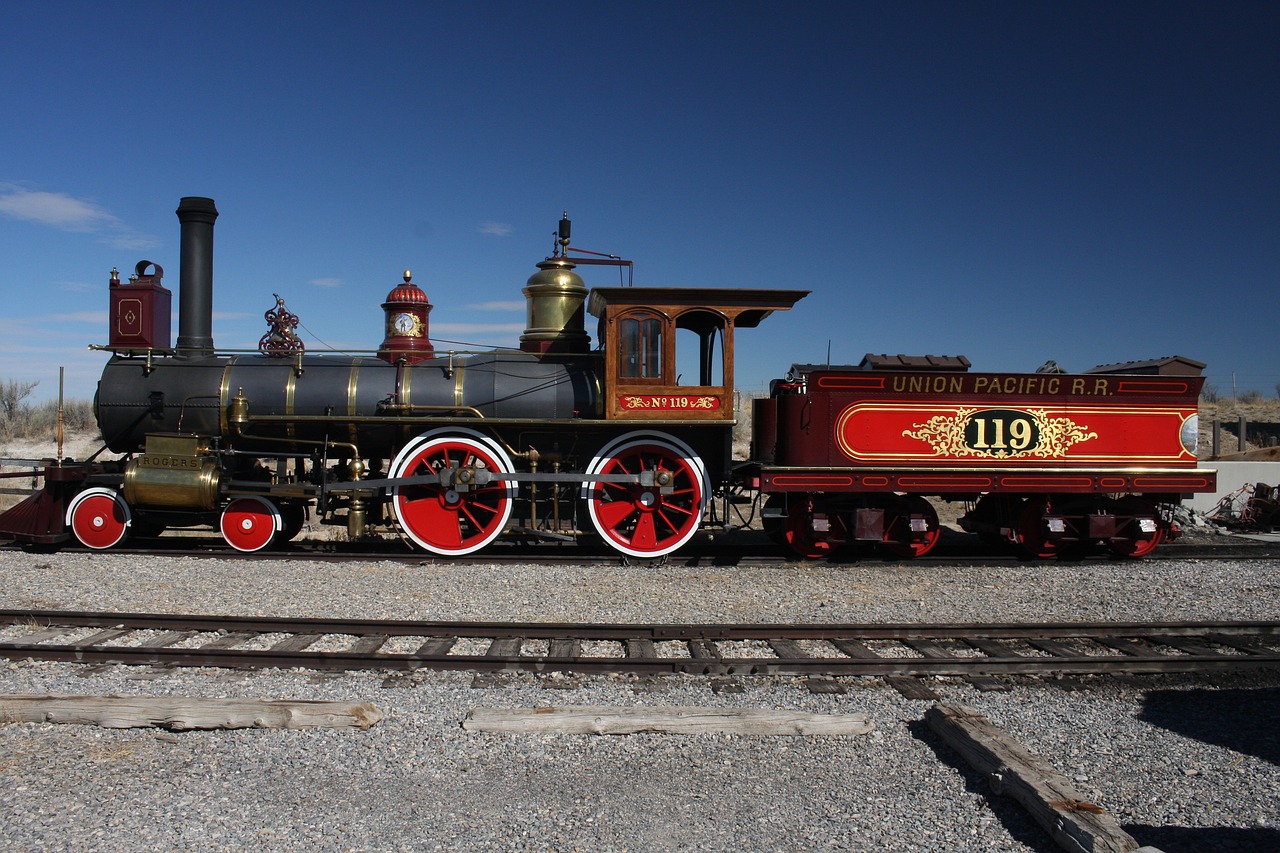
Revolutionizing Commerce
Transcontinental railroads revolutionized commerce by dramatically reducing the time and cost of transporting goods over long distances. Prior to their construction, shipping goods across the continent was a slow and expensive endeavor, often requiring lengthy and arduous journeys by wagon train or ship. With the advent of transcontinental railroads, goods could be transported quickly and efficiently, giving rise to a national and international marketplace.
The advent of transcontinental railroads was nothing short of a transportation revolution that left an indelible mark on commerce and the way goods were moved across vast distances. The impact of these monumental engineering achievements was felt not only at the national level but also reverberated throughout the global marketplace.
Before the construction of transcontinental railroads, the movement of goods from one coast to another in the United States was a logistical nightmare. It often involved arduous and time-consuming journeys, whether by wagon train across rugged terrain or by sea around treacherous capes. These methods were not only slow but also costly, with expenses incurred for manpower, equipment and the perils of unpredictable weather.
Transcontinental railroads changed the game entirely. Suddenly, the vast expanse of the continent became more accessible than ever before. The speed and efficiency of rail travel revolutionized the logistics of commerce. What once took months or even years could now be accomplished in a matter of days or weeks. This not only saved time but also reduced costs significantly.
The cost-effectiveness of rail transportation was a game-changer for businesses. It allowed for the movement of goods on a scale that was previously unimaginable. Manufacturers in the East could now easily reach markets in the West and vice versa. The ability to transport raw materials and finished products quickly and efficiently opened up new economic opportunities and spurred industrial growth.
Furthermore, the impact of transcontinental railroads was not confined to the borders of the United States. These rail networks became instrumental in connecting the nation to the global marketplace. Ports on the East and West coasts saw a surge in trade as goods could be efficiently transported from the heartland to international shipping routes. The railroads became the arteries of a rapidly expanding national and international economy.
The transformative power of transcontinental railroads extended beyond commerce. They facilitated the movement of people, ideas and cultures. People could now travel across the continent with unprecedented ease, leading to increased migration, urbanization and the exchange of diverse perspectives. The railroads played a pivotal role in shaping the American identity and the development of a cohesive national culture.
In conclusion, the construction of transcontinental railroads was a watershed moment in the history of commerce and transportation. These railroads not only dramatically reduced the time and cost of moving goods but also fostered the growth of a national and international marketplace. They were a catalyst for economic expansion, innovation and the interconnectedness of societies. The legacy of transcontinental railroads continues to be felt today, as they remain a symbol of human ingenuity and the power of infrastructure to transform the world.
Don’t stop here; you can continue your exploration by following this link for more details: Effects of Transportation on the Economy
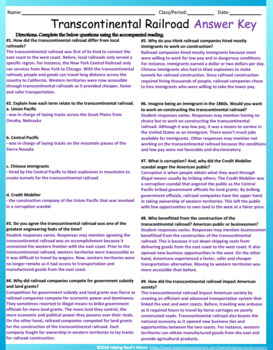
Fostering Economic Growth
The economic impact of transcontinental railroads cannot be overstated. They facilitated the movement of people, raw materials and finished products, spurring economic growth and development along their routes. New industries, such as steel manufacturing and locomotive production, emerged to meet the demand for rail infrastructure.
“The economic impact of transcontinental railroads indeed stands as a monumental force in shaping the course of nations and economies. Their significance transcends mere transportation—they were instrumental in ushering in a new era of commerce, innovation and industrialization.
A Catalyst for Economic Expansion: Transcontinental railroads acted as catalysts for economic expansion on an unprecedented scale. They laid the foundation for the rapid growth of industries, both old and new, by providing efficient transportation for goods and people. The railways effectively reduced the cost and time involved in moving products to markets.
Revolutionizing Commerce: These railroads revolutionized commerce. Suddenly, regions rich in natural resources became accessible and their wealth could be harnessed for national development. Farmers, miners and manufacturers found new markets for their products and businesses thrived as a result.
Birth of Supporting Industries: The demand for rail infrastructure sparked the birth of supporting industries. Steel manufacturing, for instance, saw exponential growth as steel became the backbone of railroad construction. This, in turn, propelled the expansion of steel-related industries and technologies.
The Locomotive Revolution: The need for powerful locomotives led to a locomotive manufacturing boom. Companies specializing in locomotive production emerged and competed to build more efficient and powerful engines. This spurred technological advancements and innovation in locomotive design.
Infrastructure Development: The construction of transcontinental railroads necessitated extensive infrastructure development. This included the building of tunnels, bridges and depots. The labor-intensive nature of these projects provided employment opportunities and further stimulated local economies.
Urban Growth and Real Estate: Along the rail routes, cities and towns sprang up, often referred to as ‘railroad towns.’ These communities experienced rapid growth as they became transportation hubs and centers of commerce. Real estate development, from residential neighborhoods to commercial districts, flourished around train stations.
Resource Extraction: Railroads facilitated the efficient extraction of natural resources. Mining operations in remote areas became economically viable and the extracted resources, whether minerals or timber, could be transported to distant markets.
National and International Trade: Transcontinental railroads enabled nations to tap into broader domestic and international markets. They became vital components of global trade networks, fostering international economic ties and exchange.
Improved Agricultural Practices: The railways played a crucial role in agriculture. Farmers gained access to larger markets for their crops, leading to agricultural specialization and more efficient farming practices. The ability to transport perishable goods, such as fruits and vegetables, extended their reach to distant urban centers.
Innovation and Technological Progress: The era of transcontinental railroads was marked by an intense spirit of innovation. It encouraged inventors and engineers to devise new technologies and solutions. The railroad industry itself became a breeding ground for groundbreaking inventions.
In summary, the economic impact of transcontinental railroads transcends historical significance—it continues to resonate in our modern world. These iron arteries not only connected coasts and nations but also ushered in a new age of commerce, industrialization and technological progress. Their legacy serves as a testament to the transformative power of infrastructure investments and the enduring impact they can have on the course of economic development.”
Should you desire more in-depth information, it’s available for your perusal on this page: 10 Ways the Transcontinental Railroad Changed America | HISTORY

Promoting Settlement and Expansion
Transcontinental railroads played a pivotal role in the westward expansion of nations like the United States and Canada. They made previously remote and inaccessible regions more accessible, encouraging settlement and urbanization. Towns and cities sprang up along rail routes, leading to the development of new agricultural, mining and industrial communities.
Transcontinental railroads played a pivotal role in the westward expansion of nations like the United States and Canada. They were the arteries of progress that pumped life into previously remote and inaccessible regions, transforming the very geography of these nations. Let’s delve deeper into how these iron tracks reshaped the landscape, encouraged settlement and fueled the rise of new communities.
The Railroad’s Manifest Destiny
In the United States, the concept of “Manifest Destiny” was intertwined with the expansion of transcontinental railroads. This doctrine held that it was America’s destiny to expand westward, from coast to coast. The completion of the First Transcontinental Railroad, joining the Central Pacific and Union Pacific lines at Promontory Summit, Utah, in 1869, marked a significant milestone in fulfilling this destiny.
Opening Up the West
Before the railroads, the western frontier was a vast and formidable expanse, often regarded as the “Wild West.” Travel across these regions was slow and treacherous, involving wagon trains and stagecoaches subject to the dangers of the untamed wilderness. The arrival of railroads drastically changed this narrative. These steel tracks provided a reliable and swift means of transportation, making remote areas accessible to settlers, adventurers and entrepreneurs alike.
The Birth of New Communities
Wherever the railroads went, communities inevitably followed. Railroad companies often established towns along their routes, serving as depots and hubs for passengers, cargo and the maintenance of trains. These towns rapidly grew into thriving communities as businesses, farms and industries sprouted up around them. The establishment of railroad yards, repair shops and service facilities further solidified their importance.
Economic Engines
Transcontinental railroads were instrumental in driving economic development in these new communities. They facilitated the movement of people and resources, giving rise to industries such as agriculture, mining and manufacturing. The ease of transporting goods to distant markets boosted trade and spurred the growth of new businesses, while agricultural regions flourished as they gained access to wider distribution networks.
Urbanization and Infrastructure
Railroads not only enabled the growth of towns but also played a pivotal role in the expansion of major cities. The connecting rail lines encouraged the development of urban centers along their paths, as these cities became vital hubs for trade and commerce. The need for robust infrastructure, including bridges, tunnels and stations, led to further engineering advancements and the growth of related industries.
A Cultural Tapestry
The westward expansion facilitated by transcontinental railroads resulted in a rich tapestry of cultures and traditions. Settlers from diverse backgrounds, including immigrants, pioneers and indigenous peoples, converged along the railroad routes. This cultural amalgamation enriched society, as traditions, languages and culinary influences merged and contributed to the unique cultural mosaic of the American West and Canada.
In conclusion, the impact of transcontinental railroads on the westward expansion of nations like the United States and Canada is a testament to their role as transformative agents of progress. They opened up new frontiers, sparked economic growth and birthed vibrant communities that continue to thrive today. As we travel along the modern railroads that crisscross continents, we can still sense the echoes of history and the enduring legacy of these iron tracks.
Should you desire more in-depth information, it’s available for your perusal on this page: The Impact of the Transcontinental Railroad | American Experience …
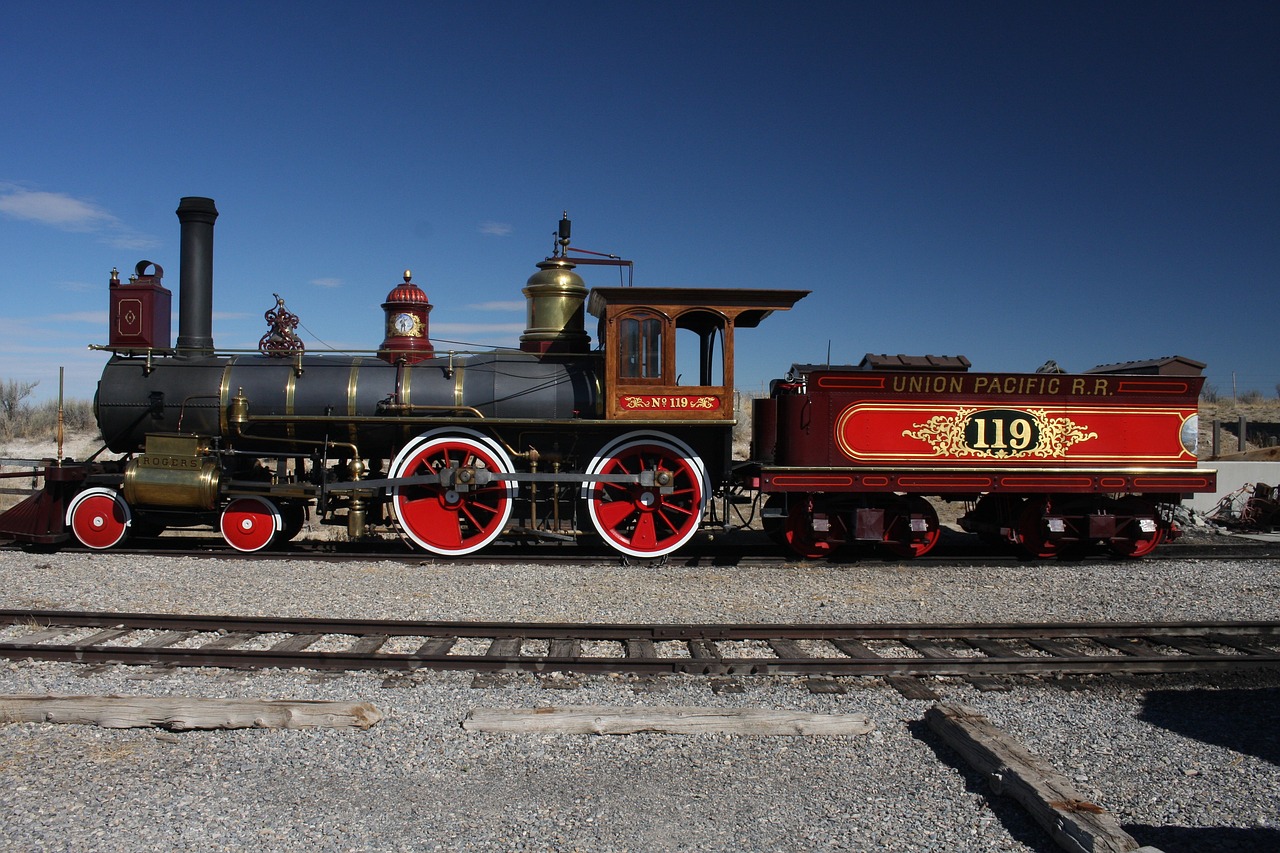
Cultural Exchange and Diversity
Transcontinental railroads brought people from diverse backgrounds and cultures into contact with one another. They became conduits for cultural exchange, as travelers and workers from different regions mingled on board trains and in newly formed communities. This diversity enriched societies and contributed to a melting pot of cultures and traditions.
The construction and operation of transcontinental railroads in the United States were monumental endeavors that not only transformed the physical landscape but also played a profound role in shaping the cultural tapestry of the nation. These railways served as more than just transportation routes; they were conduits for cultural exchange, drawing together individuals from diverse backgrounds and cultures and fostering a rich, cross-cultural dialogue.
Transcontinental railroads symbolized the audacious spirit of westward expansion. As these railways pushed across vast stretches of land, they attracted a vast array of people, from all corners of the country and the world, who sought opportunities for employment, adventure and a new way of life. Travelers and workers hailing from different regions and cultural backgrounds found themselves sharing the same train cars, working side by side on the railroad tracks and settling in newly formed communities along the rail lines.
In this diverse and dynamic environment, cultural exchange naturally occurred. Passengers on transcontinental trains engaged in conversations, shared stories and learned about the customs and traditions of their fellow travelers. These interactions broke down barriers and fostered a sense of unity and shared purpose, as people from disparate backgrounds came to appreciate the richness of their cultural differences.
The communities that sprang up along the rail lines were often melting pots of cultures and traditions. As people established homes and businesses in these towns, they brought with them their culinary traditions, languages and celebrations. The result was a vibrant fusion of cultural elements, where, for example, Chinese cuisine might be enjoyed alongside European delicacies and holiday festivals from various cultural backgrounds were celebrated with enthusiasm.
The railroads also played a significant role in promoting cultural diversity through the employment of workers from different backgrounds. Chinese laborers, Irish immigrants, African Americans and many others worked together on the construction and maintenance of the railroads. These workers not only contributed their labor but also brought their cultural influences to the workplace, creating a mosaic of traditions and practices.
Furthermore, the cultural exchange facilitated by the railroads extended beyond the United States. International travelers, scholars and even artists journeyed to America to witness the marvel of transcontinental rail travel and to explore the vast and diverse landscapes it connected. Their accounts, writings and artistic expressions served to further disseminate the cultural richness of the American experience to the wider world.
In conclusion, transcontinental railroads were more than just transportation infrastructure; they were agents of cultural convergence and exchange. These railways brought together people from diverse backgrounds and cultures, fostering a sense of unity and understanding. The legacy of this cultural exchange continues to be celebrated today as part of the enduring story of the American West and its diverse, multicultural communities. Transcontinental railroads not only connected coasts but also hearts and minds, contributing to the rich tapestry of American culture and identity.
For a comprehensive look at this subject, we invite you to read more on this dedicated page: Effects of Transportation on the Economy
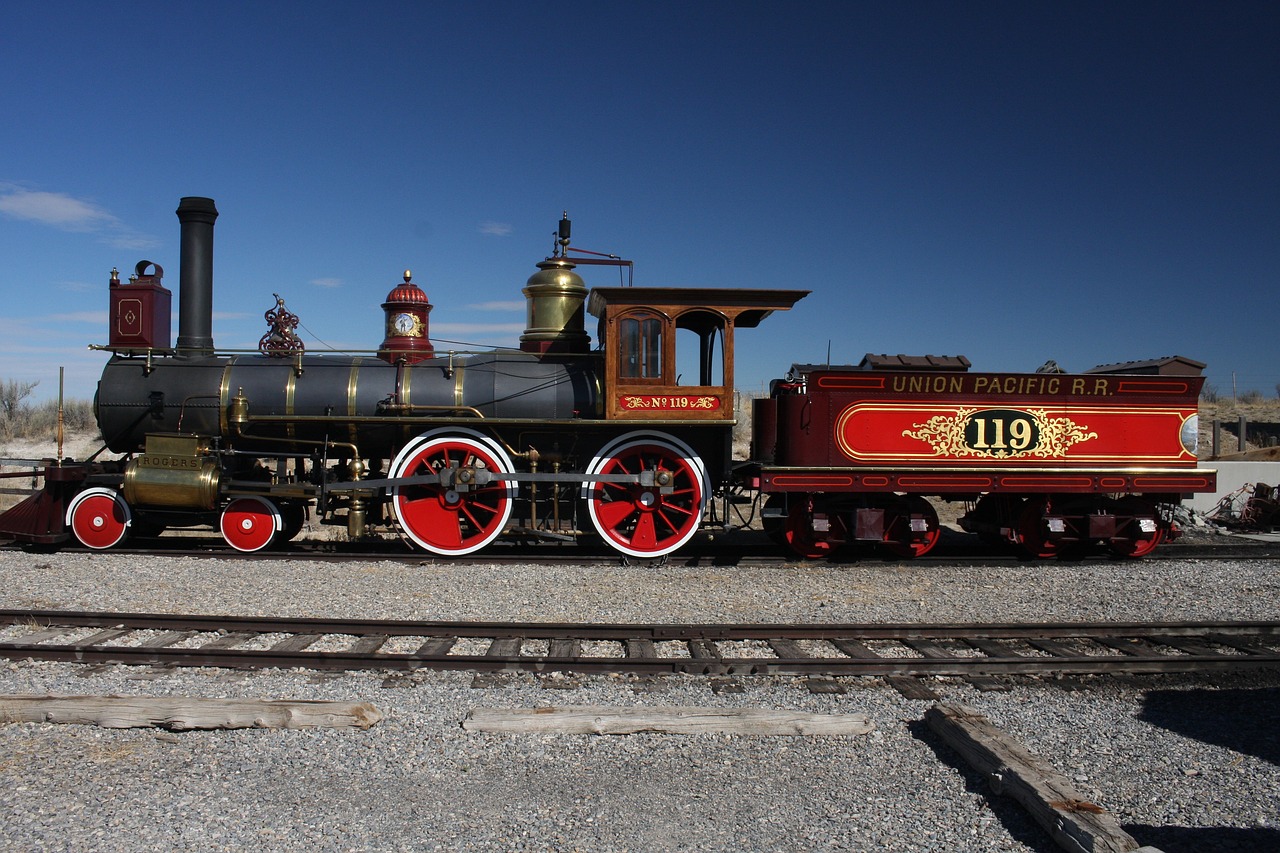
Challenges and Environmental Impact
The construction of transcontinental railroads was not without its challenges. It required enormous financial investments and posed significant environmental challenges, including the disruption of ecosystems and landscapes. The construction of tunnels through mountains, bridges spanning rivers and routes through unforgiving terrains demanded engineering ingenuity and labor-intensive efforts.
The construction of transcontinental railroads in the 19th century was an epic endeavor that reshaped not only the geography of the United States but also the course of its history. However, this monumental undertaking was rife with challenges and complexities that tested the resolve, innovation and sheer determination of those involved.
Perhaps one of the most formidable hurdles was the immense financial investment required. Building a rail network that spanned thousands of miles across rugged terrain and diverse landscapes demanded colossal sums of money. Funding for these projects often came from a combination of government subsidies, private investors and loans. The financial risks were enormous and many individuals and companies were willing to stake their fortunes on the promise of transcontinental connectivity.
The environmental challenges were equally significant. The construction of railroads often meant the disruption of ecosystems and landscapes on a massive scale. Vast swaths of wilderness were transformed into graded rights-of-way and the laying of tracks necessitated the clearing of forests, the dredging of rivers and the leveling of hills. Wetlands were drained and prairies were traversed, forever altering the natural environment. This transformation brought about ecological consequences that are still felt today.
The task of building transcontinental railroads also demanded feats of engineering ingenuity that were ahead of their time. Tunnels were excavated through formidable mountain ranges, such as the Sierra Nevada and the Rockies, often with nothing more than hand tools and dynamite. Immense bridges were constructed to span mighty rivers and the laying of tracks across treacherous marshlands required innovative techniques. The engineering marvels of this era showcased the indomitable spirit of human innovation and the audacious ambition of those who envisioned a continent united by rail.
Labor-intensive efforts were at the core of this monumental undertaking. Thousands of laborers, including immigrant workers, Chinese laborers and Civil War veterans, toiled under grueling conditions. They faced extreme weather, physical hardships and hazardous work environments. Many lost their lives in the process and their contributions remain an enduring testament to the sacrifices made in the name of progress.
In the end, the completion of the transcontinental railroads not only transformed the American West but also revolutionized transportation, commerce and communication. It united the nation in ways previously thought impossible and accelerated westward expansion. The challenges faced during their construction serve as a testament to the unyielding spirit of human ambition and the profound impact of these engineering marvels on the course of history. The legacy of the transcontinental railroads endures as a symbol of innovation and perseverance that forever altered the American landscape.
To expand your knowledge on this subject, make sure to read on at this location: The impact of the Transcontinental Railroad on Native Americans …
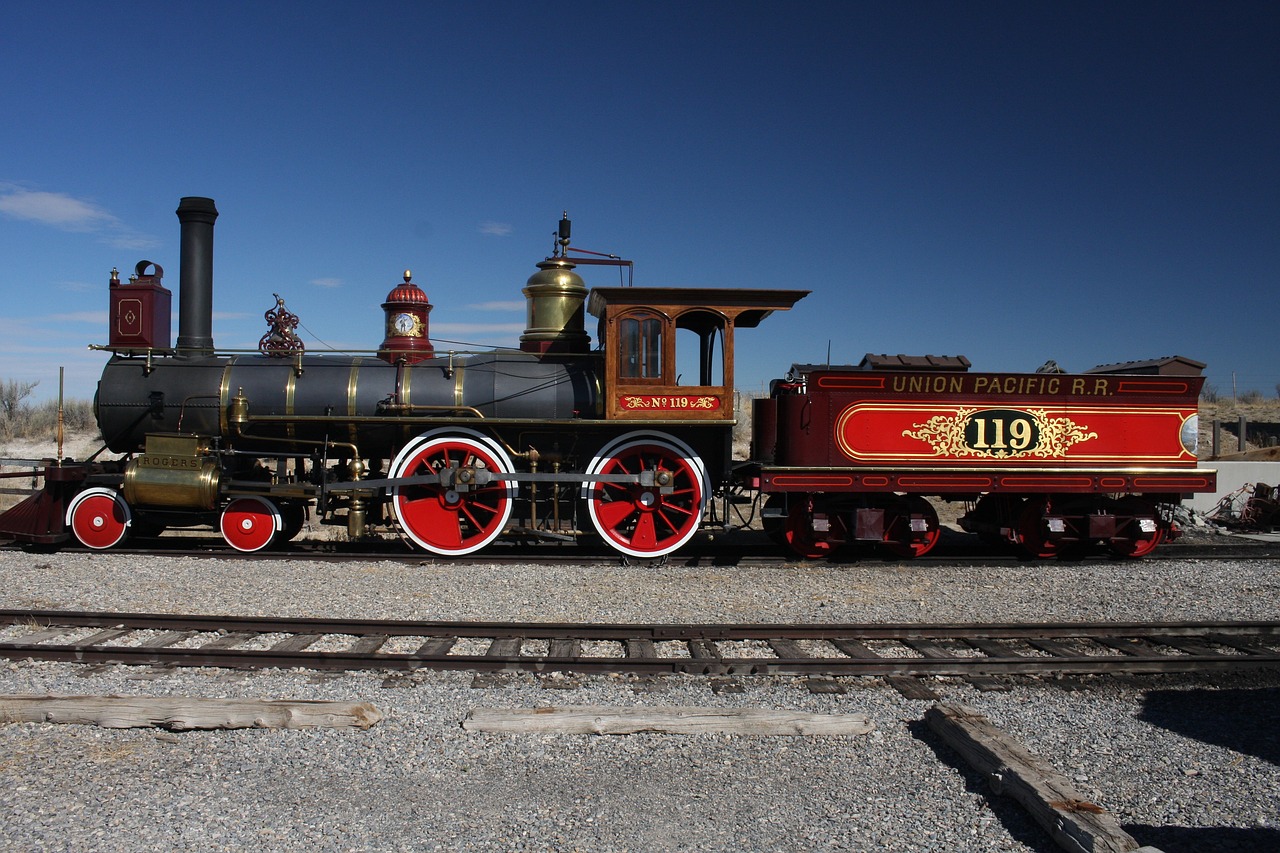
Modern Legacy
While the heyday of transcontinental railroads may have passed, their legacy endures. The rail networks they established continue to serve as vital transportation corridors for goods and passengers. Additionally, they paved the way for the development of modern transportation systems, including highways and airports, which build upon the foundation laid by the iron tracks.
The legacy of transcontinental railroads is an enduring testament to their profound impact on the development of nations and the evolution of transportation systems. Although their heyday may have passed, the enduring significance of these rail networks remains palpable, shaping the present and future of transportation in multifaceted ways. Let’s delve deeper into the abiding legacy of transcontinental railroads:
“While the grandeur of the transcontinental railroads’ construction and expansion may belong to the past, their legacy resonates strongly in the present. These historic rail networks continue to serve as essential lifelines for the movement of goods and passengers, but their influence extends beyond their iron tracks, having laid the foundation for the development of modern transportation systems that have become integral to our way of life.”
Vital Transportation Corridors: Transcontinental railroads are not relics of the past but thriving arteries of commerce and travel. They remain indispensable for the transportation of goods, linking regions and markets across vast expanses of land. The efficient movement of freight by rail reduces road congestion and carbon emissions.
Cross-Country Connectivity: These rail networks provide unparalleled connectivity, enabling the seamless movement of people and cargo from coast to coast. They play a pivotal role in maintaining supply chains, supporting industries and facilitating trade.
Economic Impact: Transcontinental railroads have had a profound and lasting economic impact. They were instrumental in opening up new territories for settlement and development, spurring economic growth and fueling the expansion of industries such as agriculture, manufacturing and mining.
Technological Advancements: The construction and operation of transcontinental railroads spurred innovation in engineering, technology and logistics. They laid the groundwork for advancements in transportation, from the development of larger locomotives to improvements in track construction and safety.
Cultural Exchange: The railroads also played a significant role in cultural exchange, facilitating the movement of people and ideas across regions. They helped to unite a diverse nation and fostered a sense of shared identity and opportunity.
Foundation for Modern Transportation: Beyond railroads, the legacy of these networks is evident in the transportation systems that followed. The concept of interconnected infrastructure, which the railroads pioneered, served as a model for the development of highways, bridges and airports.
Urban Development: The presence of railroad lines often influenced the growth and development of cities and towns. Railroad stations became focal points for urban planning and development, shaping the layout of communities.
Tourism and Heritage: Many former rail lines have been repurposed for tourism and recreation, preserving their historical significance. Scenic rail routes and heritage railways offer passengers a chance to relive the golden age of rail travel while appreciating picturesque landscapes.
Environmental Considerations: The efficiency of rail transportation has garnered renewed attention in the context of sustainability and reducing carbon emissions. Governments and businesses are exploring ways to optimize rail networks to address contemporary environmental challenges.
Inspiration for Future Projects: The audacious vision and achievement of transcontinental railroads continue to inspire large-scale infrastructure projects. From high-speed rail corridors to ambitious tunneling projects, the spirit of innovation and connectivity endures.
In conclusion, the legacy of transcontinental railroads is not relegated to the annals of history; it lives on in the interconnected world we inhabit today. These rail networks serve as vital conduits for commerce and travel, while their historical significance and impact on modern transportation continue to shape our societies and economies. As we reflect on their enduring legacy, we recognize that the indomitable spirit of exploration, innovation and connectivity that fueled the construction of these railroads remains as relevant as ever in our quest to build a more interconnected and sustainable future.
To expand your knowledge on this subject, make sure to read on at this location: Transcontinental Railroad Completed

In conclusion, the impact of transcontinental railroads is imprinted on the history and development of nations. They were more than just a means of transportation; they were instruments of progress, commerce and cultural exchange. As we reflect on the legacy of these monumental achievements, we recognize the enduring influence of rails across continents in shaping the modern world and connecting distant lands.
In summary, transcontinental railroads are indelibly etched into the annals of history, leaving an enduring mark on the development of nations and the course of human civilization. Beyond their role as mere modes of transportation, these railroads served as powerful catalysts for progress, engines of commerce and conduits for the exchange of culture, ideas and people. As we cast our gaze back upon the legacy of these monumental achievements, we are reminded of their profound and lasting impact, which continues to resonate in the contemporary world.
These railroad systems were more than just lines on a map; they were the sinews of burgeoning nations. They opened up vast expanses of land, transforming remote and desolate regions into centers of economic activity and growth. The movement of goods and people along these railways facilitated trade, spurring economic development and forging connections between distant markets. It was a feat of engineering that not only transcended geographical barriers but also knit together the very fabric of society, fostering unity and cooperation on a grand scale.
Cultural exchange thrived along these iron arteries, as diverse communities found themselves connected as never before. The railroads carried not only raw materials and manufactured goods but also the stories, traditions and ambitions of people from all walks of life. The fusion of cultures at the crossroads of these rail lines enriched societies and contributed to the tapestry of human history.
As we reflect on this legacy, we acknowledge the enduring influence of transcontinental railroads. They remain emblematic of human ingenuity and determination, reminding us that when vision is paired with unwavering dedication, transformative change becomes possible. These railroads continue to inspire and shape the modern world, illustrating the boundless potential for human progress when we dare to bridge the divides that separate us and embark on journeys that connect distant lands, not just in geography but in shared dreams and aspirations.
Don’t stop here; you can continue your exploration by following this link for more details: Transcontinental Railroad – Construction, Competition & Impact
More links
For a comprehensive look at this subject, we invite you to read more on this dedicated page: The Transcontinental Railroad | History of Railroads and Maps …
